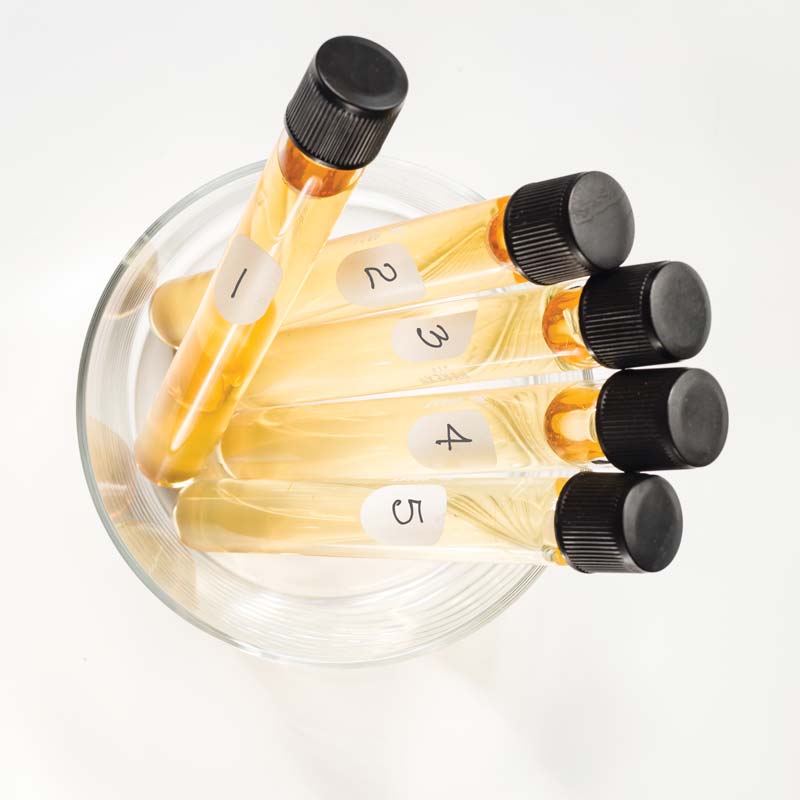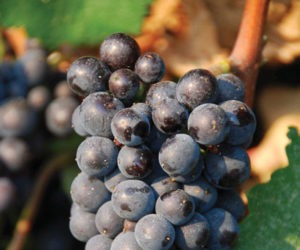Yeast Pitch Blends
The nuances of using multiple strains

Until the work of Emil Christian Hansen in the late 1800s, the world of beer fermentation was decidedly one of mixed yeast cultures. Even after the pioneering Carlsberg scientist’s efforts the yeast used to ferment much of the world’s beer remained a mixed up muddle of strains.
The ease and surety of monoculture brewing won adherents over time — to the point where, these days, the use of a single, pure-culture fermentation seem the default. Walk into most breweries in this day and age and, outside of a sour program or a special project beer, you’ll see each beer uses a single strain — “that one uses our standard house ale strain, that one our lager strain, and that one has a Belgian Trappist yeast.” A surprising (to homebrewers) number of breweries use one ale strain and one lager strain for everything they make. Every brewery makes a decision about what to keep in stock (fewer strains are easier logistically), but it’s rare to see breweries using a blend of yeast now.
Yet for all the arguments in favor of monoculture pitching and fermentation, it’s hard not to feel like something might be lost in the quest for cleanliness and ease of operation. Fortunately, as homebrewers, we’re not constrained by the needs of commercial operations.
Note to the reader: As we talk about a blended pitch in this article, please keep in mind that we’re not talking “mixed culture brewing” in the way that many homebrewers and professional brewers mean it – i.e., the use of yeast (Saccharomyces) along with other microbial cultures such as Brettanomyces, Lactobacillus, and others. For this article, we’re almost exclusively talking about the use of two or more Saccharomyces strains to complete our fermentation.
Why Blend Yeasts
Every strain of yeast is just a little different. They express different flavors, different aromas, and have different strengths and weaknesses.
The Chico/California ale strain is great to express hops because it doesn’t produce large fruity notes that would cover them up. It’s a reliable fermenter capable of driving beer to a low terminal gravity, but it’s also reliably boring.
Some of the Munich lager strains produce wonderfully malt-forward beers, but at the price of having to be careful of diacetyl production.
The Dupont family of saison strains create strikingly spicy and phenolic beers with a dryness and ineffable lightness that can make you sing . . . but their dreaded fermentation stall can leave you hanging, waiting, and offering prayers that the yeast will continue to work its magic.
By pitching multiple strains we can harness the attributes we love while covering up their flaws.
Some strains love high alcohol but produce “meh” flavors where others will drink their fill and sneak out the side door before the party is finished, leaving with you with fond memories and a mess to clean up.
By pitching multiple strains we can harness the attributes we love while covering up their flaws. It can be a partnership that produces a dazzling show instead of a flat one-note dinner theater performance.
Neva Parker, White Lab’s Director of Operations, puts it: “Using blends for fermentation can give you some unique properties you won’t/can’t get with traditional beer yeasts and it lets you get the best properties from each of the strains in the blend. For example, you like the subtle aroma profiles from a certain saison strain, but you want more attenuation so you blend a saison and a hardy fermenter (like the more reliable California, WLP001, strain of yeast).”
Don’t think this needs to be limited to just thinking in pairs. Drew learned to pitch multiple strains early on from yeast expert MB Raines, who was demonstrating back in the early 2000s the immense complexity that could be built into a Belgian-style quadrupel by pitching four or five different strains.
Think combining the flavors of Chimay, Unibroue, De Koninck, and Dupont strains and you’ll start to see some of the possibilities. Chimay, for instance, has a bready middle with restrained fruit. Unibroue always tastes like a dark plum, etc. Dupont adds tons of cinnamon and clove while also providing a low terminal gravity, as does the De Koninck strain.
Now, for MB, that was a pretty simple and economical thing to do — she’s a microbiologist with a deep freeze collection of yeasts from around the world. (She’s also the original source of Denny’s favorite yeast strain called Denny’s something or other.) If you don’t have your own supervillain yeast deep freeze collection, you can still pull a collection together from yeast packets, saved slurries from previous batches of beer, or from the bottom of your favorite beer bottle! More on that later.
Beyond flavor and aroma considerations, blending yeast strains can help with fermentation mechanics as well. Do you have a strain you love flavor wise but hate the way it ferments (e.g., most people’s opinions on the Dupont yeast strains)? You can blend in a complementary strain or a neutral strain to push your fermentation to completion with ease.
As for our own reasons to do this — well, this is primarily in Drew’s bag of tricks.
Drew: I like doing this — particularly with Belgian beers — because I feel like I get a broader tone to the beer . . . more things going on, more things to smell and taste. And look, historically, having multiple strains coursing through your beer was the norm. There are still traditional breweries in the U.K., Belgium, Germany, etc., that use blended house cultures (see the story on Gale’s Prize Old Ale starting on page 28 as an example). These days they’re generally maintained and not just free roaming, but the technique is still out there and useful in a monoculture, unicellular world.
How to Choose Strains
In talking with yeast professionals, the question we put to them was, “how do you choose the strains to blend?” In a rare and harmonious agreement, the answer was universally, “it depends on what flavors and mechanics you want.” Neva’s simple rule of thumb is, “ales together and lagers together, but there really isn’t a magic combination.”
Fausto Yu-Shan, Technical Product Support Manager for Wyeast, provided an example of choosing for flavors. Wyeast produces a number of commercial pre-blends and he offered the example of why they blend two strains: “3056 Bavarian Wheat Blend is a great choice when a delicate German wheat beer is desired in which the banana ester and phenolics are nicely softened by the neutral yeast strain.”
Brian Perkey at Lallemand offered some non-flavor oriented advice saying: “Consider the performance attributes of the strains and work from there.” In other words, look at the fermentation profile characteristics, preferred temperatures, oxygen needs, etc., and work from there.
Another weird concern is “killer strains” — some yeast, mostly wild and wine yeasts, produce a toxin that can stun other fermenters. As long as you’re dealing strictly with beer strains and aren’t running a contamination, you should be fine. Be aware though that over time, this could be a problem if your culture becomes contaminated.
To summarize: Choose strains that give you the flavors you want and the fermentation profile you desire and also align in terms of fermentation temperature and nutrient needs.
How to Use Strains
First you must decide on how you want to grow the strains you’ve selected. Together, separately, or not at all?
Pitching your yeast strains together into a single starter is easy to do — one vessel, one set of wort, less chance of contamination. Neva, for example, says that for the typical homebrewer this method will work fine as we’re not generating a ton of yeast growth so the blend will be stable.
But a single starter sacrifices control and an ability to deal with any odd growth. For instance, if you’re trying to pitch yeast dregs it would be advisable to make multiple starters and verify yeast viability and purity before blending them together. Brian prefers the control of multiple starters and advises, “never do a mixed starter, always use individually prepped pitches.”
Once your yeast is grown you need to choose how and when to add them. The simplest is to co-pitch your yeast all at once. A combined starter locks you into this method. With individual starters you could stagger your pitches to try and emphasize effects of your initial strain. (See the saison example from earlier – use the saison yeast early to get your phenolics and then Chico to finish the fermentation.)
There’s a trade-off here of simplicity vs. control and risk of contamination. Every time you open a fermenter, you take another risk at letting spoilage organisms into the mix.
A note about Brettanomyces: Mixed culture ferments with Brett are probably the place most brewers will think about multiple strains. There’s a lot of debate about pitch timing and impact on the final beer. The general rule of thumb is for a subtler Brett character, pitch it at the same time as your companion yeast. For more assertive Brett, pitch it later after the non-Brett yeast has consumed most of the wort’s sugar.
Get Lost and Drift Away
The biggest knock about running a blended yeast pitch is “drift,” or the tendency over time for one yeast strain to dominate over another. Sometimes, in Denny’s experience, it’s not even “over time.” One of his experiences was pitching the same two strains in two different situations with different results each time.
You have to be ready to accept whatever you get. Maybe your “neutral” yeast is a vigorous reproducer and crowds out your flavor-forward strain. Again, according to the experts, unless you’re planning on trying to keep your blend alive for multiple beers, this isn’t a real concern for homebrewers. But that’s according to the experts. Your own experience is what matters.
Our biggest challenge, and most fun task, is that by adding a new variable to the mix (additional yeast strains) we’re losing a bit of our surety and have new decisions to make. But as you experiment and learn what particular strains will do when combined, you can make new flavor complexity in your beer.


